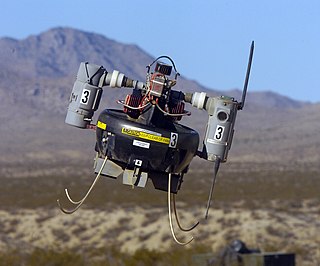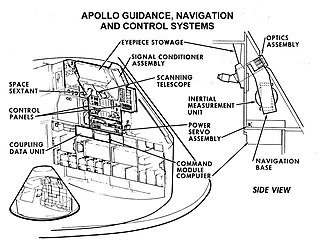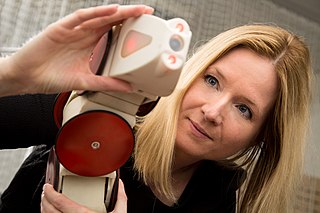
Naval architecture, or naval engineering, is an engineering discipline incorporating elements of mechanical, electrical, electronic, software and safety engineering as applied to the engineering design process, shipbuilding, maintenance, and operation of marine vessels and structures. Naval architecture involves basic and applied research, design, development, design evaluation (classification) and calculations during all stages of the life of a marine vehicle. Preliminary design of the vessel, its detailed design, construction, trials, operation and maintenance, launching and dry-docking are the main activities involved. Ship design calculations are also required for ships being modified. Naval architecture also involves formulation of safety regulations and damage-control rules and the approval and certification of ship designs to meet statutory and non-statutory requirements.

Flight or flying is the process by which an object moves through a space without contacting any planetary surface, either within an atmosphere or through the vacuum of outer space. This can be achieved by generating aerodynamic lift associated with gliding or propulsive thrust, aerostatically using buoyancy, or by ballistic movement.

The Norwegian Institute of Technology was a science institute in Trondheim, Norway. It was established in 1910, and existed as an independent technical university for 58 years, after which it was merged into the University of Trondheim as an independent college.

A remotely operated underwater vehicle is a tethered underwater mobile device, commonly called underwater robot.

A micro air vehicle (MAV), or micro aerial vehicle, is a class of miniature UAVs that has a size restriction and may be autonomous. Modern craft can be as small as 5 centimeters. Development is driven by commercial, research, government, and military purposes; with insect-sized aircraft reportedly expected in the future. The small craft allows remote observation of hazardous environments inaccessible to ground vehicles. MAVs have been built for hobby purposes, such as aerial robotics contests and aerial photography.

An autonomous underwater vehicle (AUV) is a robot that travels underwater without requiring input from an operator. AUVs constitute part of a larger group of undersea systems known as unmanned underwater vehicles, a classification that includes non-autonomous remotely operated underwater vehicles (ROVs) – controlled and powered from the surface by an operator/pilot via an umbilical or using remote control. In military applications an AUV is more often referred to as an unmanned undersea vehicle (UUV). Underwater gliders are a subclass of AUVs.

A mobile robot is an automatic machine that is capable of locomotion. Mobile robotics is usually considered to be a subfield of robotics and information engineering.
A navigation system is a computing system that aids in navigation. Navigation systems may be entirely on board the vehicle or vessel that the system is controlling or located elsewhere, making use of radio or other signal transmission to control the vehicle or vessel. In some cases, a combination of these methods is used.
In fluid dynamics and elasticity, hydroelasticity or flexible fluid-structure interaction (FSI), is a branch of science which is concerned with the motion of deformable bodies through liquids. The theory of hydroelasticity has been adapted from aeroelasticity, to describe the effect of structural response of the body on the fluid around it.

Robot localization denotes the robot's ability to establish its own position and orientation within the frame of reference. Path planning is effectively an extension of localisation, in that it requires the determination of the robot's current position and a position of a goal location, both within the same frame of reference or coordinates. Map building can be in the shape of a metric map or any notation describing locations in the robot frame of reference.

Guidance, navigation and control is a branch of engineering dealing with the design of systems to control the movement of vehicles, especially, automobiles, ships, aircraft, and spacecraft. In many cases these functions can be performed by trained humans. However, because of the speed of, for example, a rocket's dynamics, human reaction time is too slow to control this movement. Therefore, systems—now almost exclusively digital electronic—are used for such control. Even in cases where humans can perform these functions, it is often the case that GNC systems provide benefits such as alleviating operator work load, smoothing turbulence, fuel savings, etc. In addition, sophisticated applications of GNC enable automatic or remote control.

Odd Magnus Faltinsen is a Norwegian mathematician and professor of marine technology.

An inertial measurement unit (IMU) is an electronic device that measures and reports a body's specific force, angular rate, and sometimes the orientation of the body, using a combination of accelerometers, gyroscopes, and sometimes magnetometers. When the magnetometer is included, IMUs are referred to as IMMUs. IMUs are typically used to maneuver modern vehicles including motorcycles, missiles, aircraft, including unmanned aerial vehicles (UAVs), among many others, and spacecraft, including satellites and landers. Recent developments allow for the production of IMU-enabled GPS devices. An IMU allows a GPS receiver to work when GPS-signals are unavailable, such as in tunnels, inside buildings, or when electronic interference is present.
Isaac Michael Ross is a Distinguished Professor and Program Director of Control and Optimization at the Naval Postgraduate School in Monterey, CA. He has published a highly-regarded textbook on optimal control theory and seminal papers in pseudospectral optimal control theory, energy-sink theory, the optimization and deflection of near-Earth asteroids and comets, robotics, attitude dynamics and control, orbital mechanics, real-time optimal control and unscented optimal control. The Kang–Ross–Gong theorem, Ross' π lemma, Ross' time constant, the Ross–Fahroo lemma, and the Ross–Fahroo pseudospectral method are all named after him.
Underwater computer vision is a subfield of computer vision. In recent years, with the development of underwater vehicles, the need to be able to record and process huge amounts of information has become increasingly important. Applications range from inspection of underwater structures for the offshore industry to the identification and counting of fishes for biological research. However, no matter how big the impact of this technology can be to industry and research, it still is in a very early stage of development compared to traditional computer vision. One reason for this is that, the moment the camera goes into the water, a whole new set of challenges appear. On one hand, cameras have to be made waterproof, marine corrosion deteriorates materials quickly and access and modifications to experimental setups are costly, both in time and resources. On the other hand, the physical properties of the water make light behave differently, changing the appearance of a same object with variations of depth, organic material, currents, temperature etc.
Abraham Jan (Arjan) van der Schaft is a full professor of systems and control theory at the Johann Bernoulli Institute of Mathematics and Computer Science, University of Groningen. He is notable for his contributions to network modelling and control of complex systems, specifically in the areas of Port-Hamiltonian systems, passivity-based control, nonlinear H∞ control and hybrid systems. He is a Fellow of the IEEE.

Kristin Ytterstad Pettersen is a Norwegian engineer whose research involves nonlinear control theory and its application to controlling the motion of both watercraft and snakebots. She is a professor of engineering cybernetics at the Norwegian University of Science and Technology, and the founder of Eelume AS.
A synthetic air data system (SADS) is an alternative air data system that can produce synthetic air data quantities without directly measuring the air data. It uses other information such as GPS, wind information, the aircraft's attitude, and aerodynamic properties to estimate or infer the air data quantities. Though air data includes altitude, airspeed, pressures, air temperature, Mach number, and flow angles, existing known SADS primarily focuses on estimating airspeed, Angle of Attack, and Angle of sideslip. SADS is used to monitor the primary air data system if there is an anomaly due to sensor faults or system faults. It can also be potentially used as a backup to provide air data estimates for any aerial vehicle.

Håvard Fjær Grip is a Norwegian cybernetics engineer, adjunct assistant professor and robotics technologist. He leads the Flight Control Team and is Chief Pilot for NASA's Jet Propulsion Laboratory Mars helicopter, Ingenuity. Grip successfully flew Ingenuity's first flight on Mars on April 19, 2021, making history as the first extraterrestrial helicopter flight.

Duane Torrance "Mac" McRuer was a scientist, engineer, and expert in aircraft flight and other vehicle controls who cofounded Systems Technology Inc. in 1957. He made many contributions to the theory and practical application of human-machine interaction and control.














